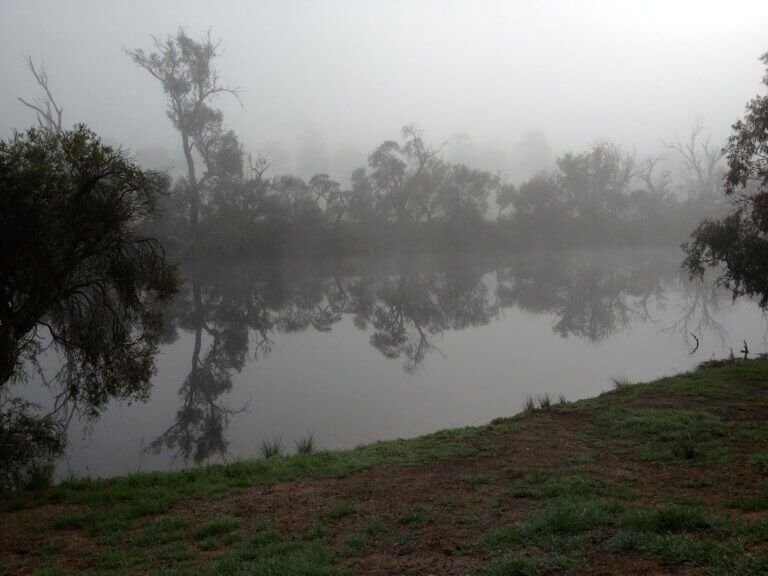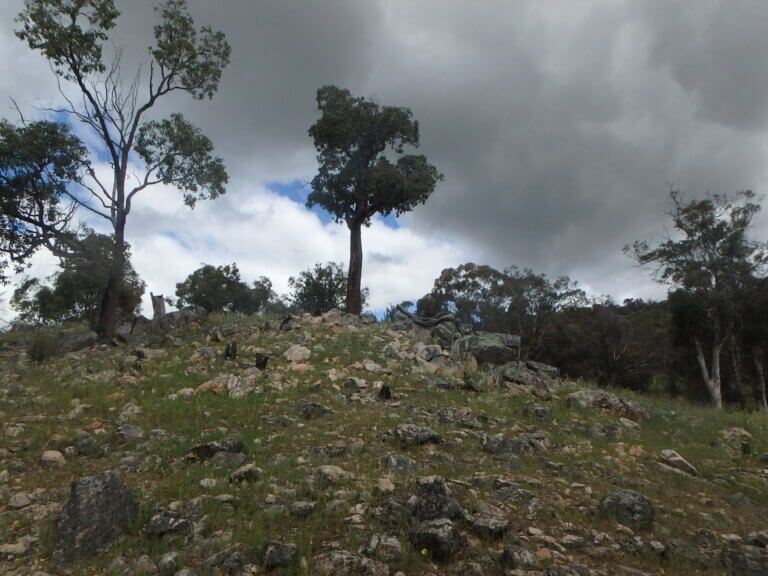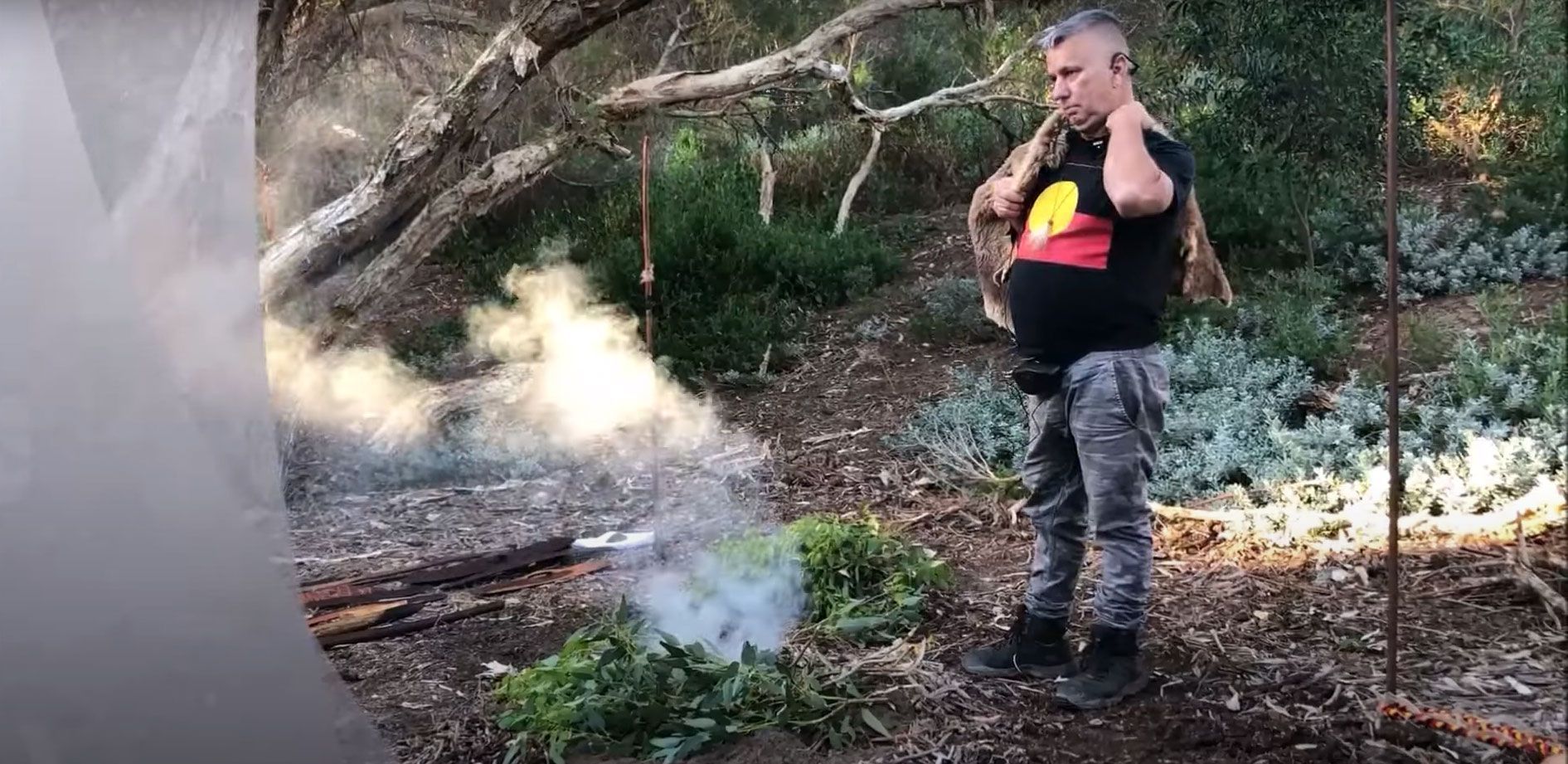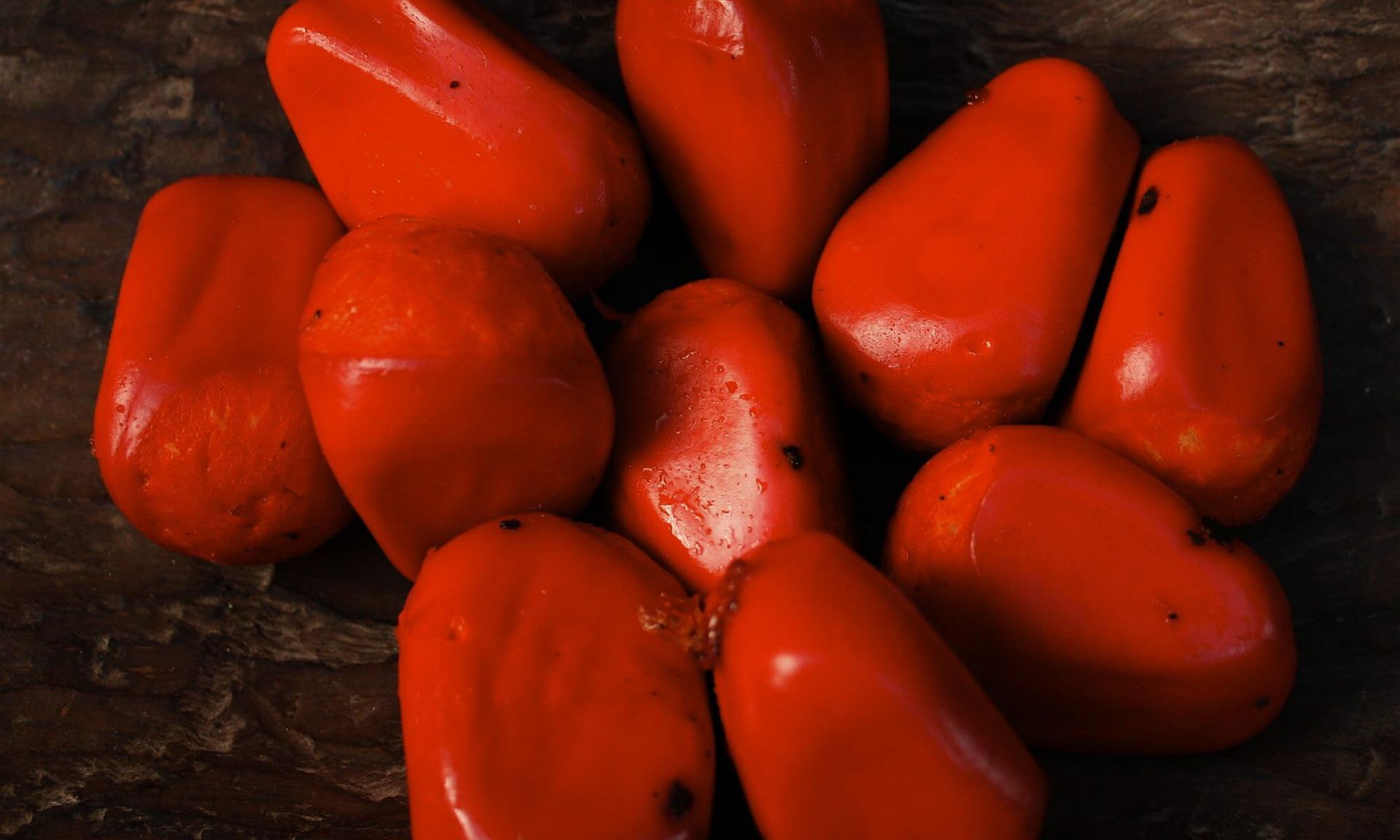The Science of the Dark and Light Seasons in Nyungar Culture
The Science of Dark and Light Seasons in Nyungar Culture
By Ken Macintyre and Barb Dobson, Research anthropologists and Iva Hayward-Jackson, Nyungar heritage consultant and Land & Culture Protector
‘Qua, bir-ok, mag-goro warh-rang.’ ‘Yes, three years (summers and winters).’
(Symmons 1841: xiii)
Charles Symmons (1841) who was the “Protector of Aborigines” and reasonably fluent in the Nyungar language provides the earliest linguistic reference to the annual cycle of Nyungar seasonality. He quotes his Nyungar informant verbatim saying “birok, mag-goro” to represent a year. Literally “qua, bir-ok, mag-goro warh-rang” translates as “yes, summer, winter, three” meaning “three years.”
Captain George Grey (1840:76) in his Vocabulary of the Dialects of South Western Australia records his informant’s verbatim description of “berok” (the summer season) as ‘Ngan-ga-mor-doo-een’ meaning “the sun is powerful” (1840:10) and “maggoro” (winter) as ‘Ngan-ga-nu-map’ meaning ‘the sun is not powerful’ (1840: 76). Literally these idioms which describe nganga, the sun, as mordooeen, “strong” or numap, “little” (diminished) suggest that the Sun’s strength and luminosity (and possibly photoperiod) ultimately structured the Nyungar calendar, dividing it into two overarching seasons of light and darkness, not dissimilar to the natural cycles of day and night but extending over an annual cycle or year.


Throughout the year changing levels of light, heat, humidity and rainfall influenced animal, bird, plant and fish breeding cycles and behaviour which in turn regulated the seasonal availability of foods on which Nyungar people depended for survival. The two primary seasons of berok and maggoro are universally represented in the indigenous calendars of southwestern Australia, including at Perth, Albany and New Norcia/ Victoria Plains. It would seem that sunlight and its intensity also defined the seasons of summer and winter in Aboriginal Victoria and possibly other parts of temperate south-eastern Australia. 1
In southwestern Australia maggoro (also spelt magguru, makuru, macore, mocor, mawkur, mokkar, moker) is the season of rain, low light, cold, short days and long nights (winter) whereas berok (or beruc, birok, birak, pirak, piroc) represents the season of bright light, hot, dry and long days (summer). These seasons are assigned different durations, depending on the European recorder. Grey (1840) records maggoro as June, July and August whereas George Fletcher-Moore (1842) records it as only two months – June and July. Collie (1834) records the season of “mokkar” at Albany as extending from late May to July whereas Barker (1830) records “moker” as late April to August. Each recorder has a different interpretation of seasonal duration. This is not surprising given the complexity of traditional Nyungar seasonal reckoning.
There are many variant spellings of the term maggoro, including makuru or mawkuru in the Perth and Swan Coastal Plains area; or macore, mocor or macora in the Victoria Plains/ New Norcia region (Salvado 1851) and mawkur, mokkar, moker in the Albany region (Barker 1830, Nind 1831 and Collie 1834). The name derives from the Nyungar term moko which Symmonds (1841) translates as meaning “rain” or Lyon (1833) “water.” It refers to the rainy season when there is little or low light.

The Nyungar also traditionally recognised other seasons, sub-seasons and “named periods” of the year. These include meerteluc, pourner, minongal and mondianong as recorded at Albany (Barker 1830, Nind 1831 and Collie 1834) and bourner, geran, wanyarung, dulbar, jilba, manga and kumbarang recorded in the Perth region and other parts of southwestern Australia. Some of these seasons or named periods (depending on how “season” is defined) may indicate localised phenological events such as bird nesting (manga or maungernan),2 frog mating, salmon spawning (meerteluc, Albany), emu nesting (season of mokkar) or instructional descriptors, such as jeran which signified time to put on condition (fat) to ensure survival through the long cold wet season when food resources were less plentiful or less easily accessed due to inclement weather. Annually recurring bird, plant, animal and fish breeding phenological cycles – and their ceremonial renewal and maintenance – largely determined traditional Nyungar seasonal economic, ceremonial, social and cultural activities.
The named period of kumbarang (mid to late spring) probably derives its meaning from kumbar (also spelt gumbar, goombar, cumbar) meaning “big” referring to the big gatherings that were traditionally held at this time of year when large groups of Nyungar people from different districts congregated together for social, ceremonial and cultural purposes.
It is possible that the season of dulbar which Grey (1840:33) records as ‘the season of April and May’ was an instructional descriptor indicating the time to build waterproof huts in readiness for the wet season. Grey (1840) translates his Nyungar informant’s statement Dul-bar mya warrow-een as ‘we make huts in Dulbar.’ He states that dulbar ‘follows the season of Boor-noo-ro, and is followed by that of Mag-go-ro.’ Moore (1842: 24) records dulbar as the “Season of bad or wet weather” and although he notes that it was the time for building huts, he does not attribute a time period to this season, nor does he include it in his six season calendar (Moore 1842: 10). Whether this was an oversight on his part or because he already had two names for this time of year (namely geran and wanyarang) he may not have wished to confuse his readers or himself with having three names for the same season.
The number of seasons in the Nyungar calendar varies according to European recorder. For example, at Albany six seasons are recorded by Nind (1831); five seasons by George Fletcher Moore (1833); four seasons by Collie (1834) and a number of seasons and ‘part’-seasons or ‘little’ seasons and sub-seasonal cycles by Barker (1830) who showed a remarkable interest in trying to understand how Nyungar people themselves demarcated their seasons. His raw and unedited ethnographic materials include verbatim quotes from Mokare all of which highlight the dark and light cycles of moon phases, astronomical formations and natural phenomena in determining seasonality (Barker 1830 in Mulvaney & Green 1992).


Salvado (1851 in Storman 1982: 131) also noted that Nyungar people living in the New Norcia region to the north of Perth used the appearance of prominent stars and constellations as indicating the approach of certain seasons, such as “…when the Pleiades appear on the horizon at the break of dawn, this is a sign that the season they call cielba (‘the grass season’) is drawing near.’ In a cyclical sense cielba or jilba which corresponds to early spring also represents the beginning of the light season (dawn).
Salvado (1851 in Stormon 1976: 131) who was aware of George Fletcher Moore’s (1842) six season interpretation comments further that ‘…some natives divide the year into six different seasons; but many others divide it into four.’ These four seasons are mocor, cielba, piroc, ponar.
The traditional Nyungar calendar may be viewed as solar-lunar in that the sun’s strength and luminosity naturally divides the year into dark and light seasons, and the light and dark lunar phases (e.g. full moon, dark moon) together with the observed appearance and positioning of culturally-recognised dark and light constellations, alone or in combination with other natural indicators, were used to map the beginning, peak and end of certain seasons. The fleeting ethnographic detail collected by Grey (1840) from his Nyungar informants confirms the importance of light and heat or sunlight intensity in reckoning the two main seasons while Barker’s (1830) work recognises the importance of lunar phases and astronomical formations, such as the dark emu, in structuring indigenous seasonality as told to him by Mokare.
The precise timing of the seasons would have varied from region to region depending on climatic and meteorological patterns and events which in turn influenced the local plant, fish, bird and animal breeding cycles and behaviour which in turn ordered human economic, social and ceremonial activities. Throughout southwestern Australia the seasonal calendars were localised, pragmatic, precise and empirically grounded in scientific and cultural information that had been gathered and passed down through the generations over many thousands of years. The accuracy of determining seasonality on a regional basis was vital to the survival of Nyungar people.
Astronomical Indicators
Different astronomical indicators were used to reckon time and seasonality in ancient Nyungar culture. The beginning of the “light” season (around late August/ September) was indicated by the appearance of the Pleaides (Seven Sisters) constellation which, as noted by Salvado (1851 in Stormon 1982: 131) signified to Nyungar people the arrival of cielba. Dark constellations were also recognised. The appearance of the dark emu in the sky symbolised the commencement of the “dark” rainy season of mokkar. The astronomical emu (or ‘emu in the sky’ as it is commonly known) is well recognised by Aboriginal groups throughout Australia, not just the Nyungar. However, the Aboriginal significance of this dark constellation was first recorded among the Nyungar by Barker in 1830 whose work provides the earliest ethnographic reference in Australia to the constellation’s cultural significance in relation to measuring or mapping indigenous seasonality.
On 22 April 1830 Barker was informed by his Aboriginal informant Mokare at Albany that the season of Moker had just begun:
‘[Mokare] Told me this evening that Moker had commenced, which he knew by the situation of the Black Magellanic cloud near the cross (Whitepepoy).* They have some story which I could not clearly make out, of its being an Emu & laying eggs.’
(Barker 1830 in Mulvaney and Green 1992: 284).
It would seem that what Mokare was trying to communicate to Barker was the presence of a dark silhouette in the shape of an emu in the night sky and the story associated with it. However, owing to language and cross-cultural communication difficulties it was difficult for Barker to understand the details and meaning of the story he was being told about “an Emu & laying eggs.”
The dark constellation of the celestial emu is most clearly visible on dark cloudless nights when there is little or no moon. Our historical archival research on lunar phases confirms that on the evening of 22 April 1830 when Mokare pointed out the dark emu constellation to Barker, informing him that it announced the commencement of moker, it was in fact a dark or new moon. On a moonless night the dark emu silhouette would have been easily recognisable, if one knew what one was supposed to be looking at.3
The nesting posture of the sky emu and its seasonal timing uncannily parallels the phenological breeding cycle of this tall, flightless, totemically significant bird on land. The synchronicity that this demonstrates between the earth-world and sky-world is indeed remarkable. The celestial emu or waitch in the sky not only announces the onset of the rainy season in southwestern Australia but also signifies the traditional time for hunting emu when the bird is in peak fat condition and an easy target for the spear as it sits motionless on the nest for a two month period incubating the eggs. Emu eggs were, and still are, a highly favoured nutritional source (one emu egg is said to be equivalent in volume to a dozen or more chicken eggs).
Little (or Partial) Seasons
Another aspect of indigenous seasonality that appears to have confused Barker was the recognition of partial seasons. For example, Mokare told him on the night of April 22nd that: “It is now partly ‘Prughen’ and partly ‘Moker.” Will be completely ‘Moker’ at the full moon.” (Barker in Mulvaney and Green 1992: 284).4
How could Barker have been expected to understand that the Nyungar seasons were overlapping and not sharply mutually exclusive as in the Western model where the four seasons were mathematically defined, clearly divided and mutually exclusive. The Nyungar seasons were intricately attuned to climatic fluctuations and animal, plant and bird reproductive phenological variability and they allowed for the co-existence of two seasons at the same time. For example, on 12th March 1830 “Mokare had said today it was now Pruhner. The Frogs (Cyrye) were heard. It was still however ‘Metelok little.’ (Barker 1830 in Mulvaney and Green 1992: 274)
On 1st August 1830 Barker asked Mokare what season they were in. He replied:
‘Now little Minongol, little Moker. Minongal lasts about 2 1/2 months.’ (Mulvaney and Green 1992: 321).
Barker’s (1830) minongal is the same as Nind’s (1831) meerningal or Collie’s mainungull or Moore’s (1842: 51) menangal which describes the spring season at King George Sound. The recording of “little” or “partial” seasons by Barker (1830) shows the complexity of the indigenous seasonal model which accommodates inter-phase or transitional periods, unlike the Western model where the seasons suddenly change arbitrarily from one to the other without any recognised overlap or transition. These “partial” or “little” seasons that are found at either end of the “full” season encapsulate the cyclic ebb and flow of Nyungar seasonality and can be imagined as a conjoined series of normal curves or a rhythmical wave movement. It was this fluidity of the transmutation of the seasons that Barker found so difficult to comprehend because it was at odds with the rigid, arbitrary and mutually exclusive Western seasonal divisions that he was accustomed to. It is hardly surprising that he, in his frustration and failure to understand Mokare’s explanation of the subtleties of seasonal change, was led to declare that ‘the boundaries of their seasons are not precisely defined’ (in Mulvaney and Green 1992: 284). From a Western cultural perspective, it may seem at first glance as though the Nyungar seasons are “not precisely defined” but in fact, on further analysis, the ethnographic information provided by Mokare would suggest the opposite – that their seasons were more precisely defined because they recognised the subtleties of interphase and transitional seasonality. When Mokare states: “It is now partly ‘Prughen’ and partly ‘Moker” or “Now little Minongol, little Moker,’” these “paired” partial seasons, representing a fusion or amalgam of the tail ends of successive seasonal cycles, provide a flexibility, fluidity and precision that is absent in the Western model.
In conclusion these finely differentiated indigenous-recognised seasonal categories may be seen as providing an essential adaptive mechanism that enabled Nyungar people to accommodate climatic and phenological variability and to organise their hunter-gatherer-cultivator economic, social and ceremonial lives accordingly.
ACKNOWLEDGEMENTS
By Ken Macintyre and Barb Dobson, Research anthropologists and Iva Hayward-Jackson, Nyungar heritage consultant and Land and Culture Protector.
Annotations
- The Aboriginal names for summer and winter recorded among Victorian Aboriginal groups during the 19th century similarly suggest the underlying importance of the sun’s intensity (light, heat) is determining seasonality. Thomas and McCrae document the traditional names for summer and winter among the Wurundjeri and Bunurong as follows: winter per-ring-nger-wein, perrin (perein = no more sun) and summer nerrim-ngerwein, (nger-wein = sun) or Bullarto n’yoweenth (plenty sun). (Source: Dr Beth Gott of the School of Biological Sciences, Monash University. “Seasonal Calendars for the Melbourne Area.”
This suggests that the traditional calendars of Aboriginal people of temperate south-eastern Australia also shared these two primary over-arching seasons of darkness and light in addition to other seasons. As in southwestern Australia there would have been regional variations depending on climate, weather, ecology and plant and animal resources and these differences would have been especially noticeable between coastal and inland regions.
- Nind (1831:54) records Maungernan as the season between meerningal (early spring) and beruc (summer). He states:
‘At the springtime of the year, they live principally upon the eggs and young of birds, chiefly of the parrot tribe, but also of hawks, ducks, swans, pigeons, etc.’ (Nind 1831 in Green 1979: 29)
‘Man-ga A nest. Robbing birds’ nests is a favourite occupation in the proper season of the year.’ (Moore 1842: 49).
Could Nind’s Maungernan be a seasonal descriptor deriving from “manga” meaning nest, referring to the season of parrot nesting or bird nesting.
3. Is it a coincidence that there is a large dark emu in the southern skies at the same time as when emus are breeding on land? Or is there possibly a scientific explanation for why Nyungar people used this astronomical phenomenon as a determinant of their seasonal calendar? We would suggest that traditional phenological science was involved because Mokare informs Barker that the season of moker consisted of three sub-seasons or sub-cycles. The Nyungar names provided to Barker appear to translate to mating, nesting and hatching of emu chicks.
Uncannily, when the indigenous-recognised dark emu disappears from the winter skies in August (or September) this signifies that the emu’s winter breeding cycle (4-5 months) is over.
4. Barker’s handwriting in his 1830 journal is at times very difficult to decipher, especially his “n’s and “r”‘s that are sometimes indistinguishable. When we examined his handwritten journal on microfilm at the Colonial Records Office at the WA State Library we interpreted the Minang name for the winter season as “moker” – not “moken” as interpreted by Mulvaney and Green. “Moker” is consistent with Nind’s mawkur and Collie’s mokkar. These three recorders obtained much of their ethnographic information from Mokare.
BIBILOGRAPHY
Barker, Collet 1830 Journal. Available on Microfilm at the Battye Library, CSO Records. Perth. Original copy held at the State Library of New South Wales.
Bindon, P. and R. Chadwick (eds.) 1992 A Nyoongar Wordlist from the South-West of Western Australia. WA Museum, Anthropology Department.
Cameron, J. M.R. 2006 The Millendon Memoirs: George Fletcher Moore’s Western Australian Diaries and Letters, 1830-1841. Victoria Park: Hesperian Press.
Gott, B. (n.d.) “Seasonal Calendars for the Melbourne Area.” https://www.herringisland.org/seasons1.htm
Green, N. 1979 Nyungar – The People: Aboriginal customs in the southwest of Australia. Mt Lawley, North Perth: Creative Research Publishers.
Grey, G., 1840 A Vocabulary of the Dialects of South Western Australia. London: T. and W. Boone.
Moore, G.F., 1842 A Descriptive Vocabulary of the Language in Common Use Amongst the Aborigines of Western Australia. London: W.S. Orr and Co. Hard copy.
Mulvaney, J. and N. Green 1992 Commandant of Solitude: The Journals of Captain Collet Barker 1828-1831, Carlton, Victoria: Melbourne University Press.
Stormon E. J. 1977 The Salvado Memoirs. Nedlands: University of Western Australia Press.
Symmons, C. 1841 Grammatical introduction to the study of the Aboriginal language of Western Australia. Perth: Western Australia Almanac. Photocopy from Battye Library, Perth.



